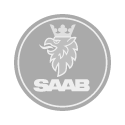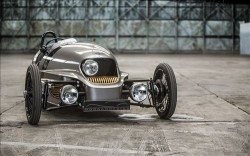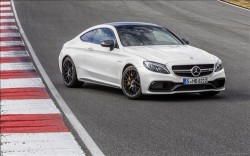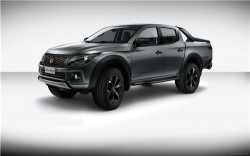Wallpapers
 Originally known as Svenska Aeroplan Aktiebolaget (Svenska Aircraft
Company), Saab is a Swedish company that began manufacturing
automobiles in 1949. The company's early designs placed an emphasis on
aerodynamics that is reflective of its history as an aircraft
manufacturer. The first production Saab, the 92, boasted a lower
coefficient of drag than many modern cars. The 93, unveiled in 1955,
was powered by a three-cylinder, 33-horsepower engine, and featured the
distinctive fastback profile that made early Saab cars among the most
recognizable automobiles on the road. By the time the '50s drew to a
close, Saab's lineup had grown to include the 95 wagon (capable of
seating up to seven) and the 93 750 Gran Turismo, the automaker's first
series-built sports car.
Originally known as Svenska Aeroplan Aktiebolaget (Svenska Aircraft
Company), Saab is a Swedish company that began manufacturing
automobiles in 1949. The company's early designs placed an emphasis on
aerodynamics that is reflective of its history as an aircraft
manufacturer. The first production Saab, the 92, boasted a lower
coefficient of drag than many modern cars. The 93, unveiled in 1955,
was powered by a three-cylinder, 33-horsepower engine, and featured the
distinctive fastback profile that made early Saab cars among the most
recognizable automobiles on the road. By the time the '50s drew to a
close, Saab's lineup had grown to include the 95 wagon (capable of
seating up to seven) and the 93 750 Gran Turismo, the automaker's first
series-built sports car.
The marque started the '60s with the introduction of its successful
Saab 96. With a production run of 20 years, this was the car that made
Saab a recognized presence in the international market. The decade also
saw the launch of the Saab Sport coupe. Scoring numerous wins on the
rally circuit, the coupe marked Saab as a force to be reckoned with.
The Sport's success on the track inspired a name change; it later came
to be known as the Saab Monte Carlo 850. The Saab Sonett II, with its
body of fiberglass-reinforced plastic, also made its debut during the
'60s, as did the Saab 99, which was the first to feature the
manufacturer's trademark wraparound windshield.
In 1973, Saab gave birth to the 99 Combi Coupe. The car came to be
definitive of the Saab brand; with its hatchback and fold-down rear
seat it offered remarkable utility. By the end of the decade, Saab had
rolled out the 99 Turbo, which was a forerunner in harnessing turbo
technology for use in production cars. The company also introduced the
Saab 900, which held the distinction of being the first car to offer a
cabin air filter.
During the 1980s, Saab cars (especially the Turbo models) gained
American popularity as young urban professionals (yuppies) sought them
out. The decade saw the launch of the Saab 900 Turbo, the Saab 900
Turbo Aero (the world's first car to offer a 16-valve turbo engine) and
a popular convertible version of the 900.
In 1990, General Motors bought half of Saab's automotive division. The
decade saw the launch of a revamped 900; the car offered a bevy of
cutting-edge safety features, including three rear three-point
seatbelts and rear side-impact protection. By the time the '90s drew to
a close, Saab had also unveiled the 9-5, its first premium four-door
sedan. The car offered a host of new technologies such as ventilated
seats. It was also the first to offer Saab's Active Head Restraints, a
system designed to prevent whiplash injuries.
By the 2000s, General Motors had bought the other half of Saab
Automobile. Despite the brand's position on the leading edge of safety
technology, Saab's popularity in the U.S. has waned (however, the
marque continues to be a big seller in Europe). Some have blamed the
brand's poor performance domestically on GM's badge engineering of Saab
cars. New models like the 9-2X and the 9-7X were based on platforms
lifted from other GM brands � Subaru and Chevrolet, respectively.
Still, many touches of individuality remain, and the brand has much to
offer those who embrace its singular personality.
Views: 24269
[Source: Edmund's ]
Latest Wallpapers
Following is the list of recent pictures updates on our site.
DieselStation Social
















